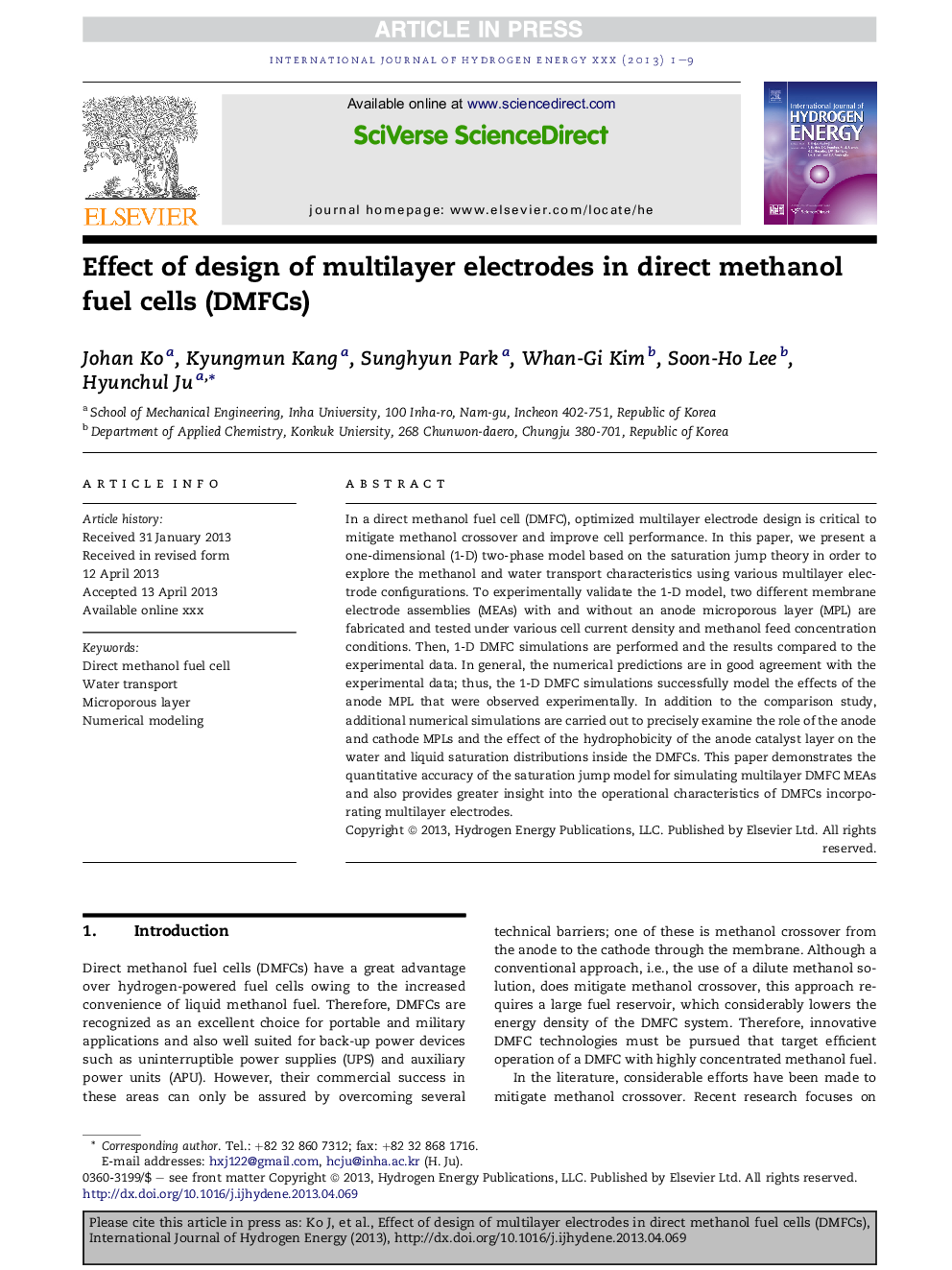| Article ID | Journal | Published Year | Pages | File Type |
|---|---|---|---|---|
| 7720963 | International Journal of Hydrogen Energy | 2014 | 9 Pages |
Abstract
In a direct methanol fuel cell (DMFC), optimized multilayer electrode design is critical to mitigate methanol crossover and improve cell performance. In this paper, we present a one-dimensional (1-D) two-phase model based on the saturation jump theory in order to explore the methanol and water transport characteristics using various multilayer electrode configurations. To experimentally validate the 1-D model, two different membrane electrode assemblies (MEAs) with and without an anode microporous layer (MPL) are fabricated and tested under various cell current density and methanol feed concentration conditions. Then, 1-D DMFC simulations are performed and the results compared to the experimental data. In general, the numerical predictions are in good agreement with the experimental data; thus, the 1-D DMFC simulations successfully model the effects of the anode MPL that were observed experimentally. In addition to the comparison study, additional numerical simulations are carried out to precisely examine the role of the anode and cathode MPLs and the effect of the hydrophobicity of the anode catalyst layer on the water and liquid saturation distributions inside the DMFCs. This paper demonstrates the quantitative accuracy of the saturation jump model for simulating multilayer DMFC MEAs and also provides greater insight into the operational characteristics of DMFCs incorporating multilayer electrodes.
Related Topics
Physical Sciences and Engineering
Chemistry
Electrochemistry
Authors
Johan Ko, Kyungmun Kang, Sunghyun Park, Whan-Gi Kim, Soon-Ho Lee, Hyunchul Ju,
